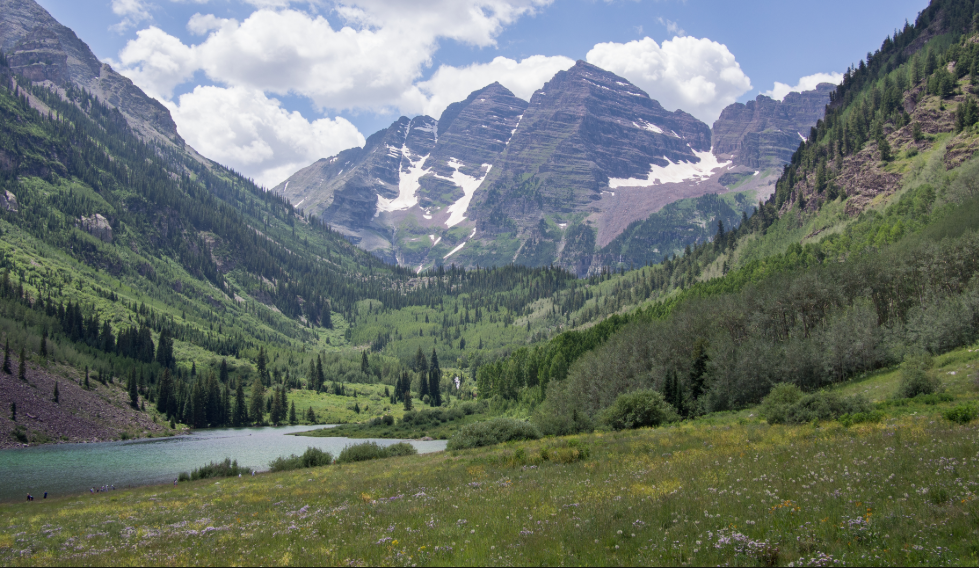A settlement that could move a dam to a better location than beneath the Maroon Bells might be reached in Colorado. Wikipedia photo.
Editor’s note: Every day, all across America, TU volunteers are working in their local watersheds to improve habitat, water quality and angler opportunity. We’re starting a new weekly feature here on the TU blog to honor those volunteers and share their stories.
A court case in Aspen, Colo., might be nearing its conclusion with a settlement between the city of Aspen and several plaintiffs, including Colorado Trout Unlimited, that would move two prospective dam sites from important watersheds and disperse the city’s future water storage among six different, lower-impact sites. It looks like a much better plan than the existing one, which would put a dam at the base of Pyramid Peak within site of Colorado’s iconic Maroon Bells (pictured above).
Compromise and settlements almost always beat drawn-out and expensive court cases. We’ll chalk this settlement up as a win for the Roaring Fork Valley’s rivers, its trout and its anglers.
Here’s what else TU is up to around the country:
- TU’s David Kyle is part of a large emergency effort to save Lake Sammamish’s native kokanee salmon, a landlocked sockeye salmon native to King County in Washington state. The fishery is dire straits—five years ago, 18,000 salmon returned to spawn. Last year, only 18 fish returned.
- Two Pennsylvania TU chapters are busy this spring. The Cordoras Chapter of TU is planning a women’s fly fishing clinic, and the neighboring Adams County TU chapter is hosting a presentation next week titled, “A Modern Look at Brown Trout.”
- Also in Pennsylvania, TU is part of a multi-million-dollar effort to clean up Black Creek, a tributary of the Lehigh River. Black Creek is impacted by acid mine drainage, and plans are in place to treat water at the pollution source to lower pH in the creek, which, once cleaned up, could once again host wild and native trout.
- The Mianus Chapter of Trout Unlimited is working with the community of Wilton to remove a dam on the Norwalk River. This dam removal, coupled with other barrier removal projects, could restore migratory populations of trout, striped bass, shad, herring and other anadromous fish.
- The Oak Brook Chapter of Trout Unlimited, based in suburban Chicago, is one of hundreds around the country involved in Trout in the Classroom projects all over America.
These are just a handful of examples of how TU, its staff and volunteers work every day to make fishing better for all.
— Chris Hunt



